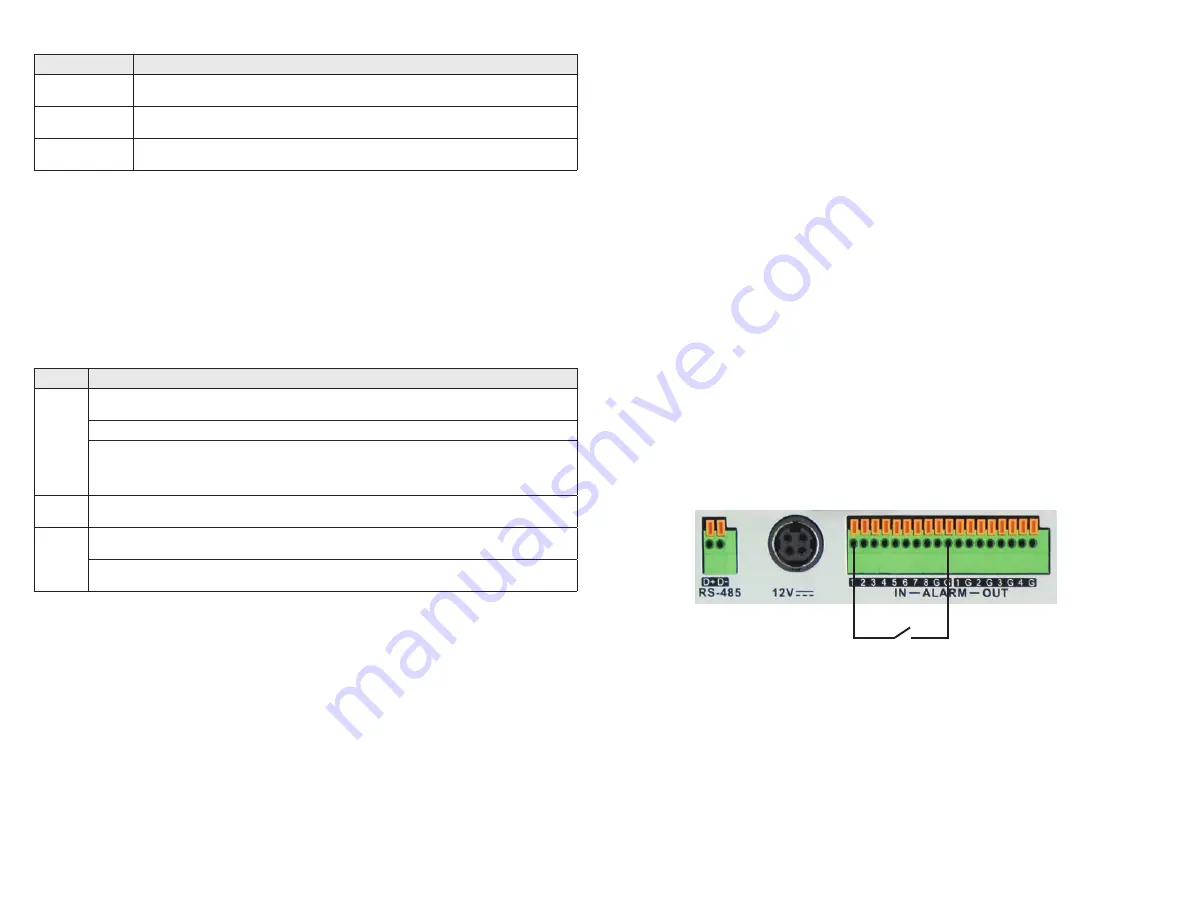
2
www.Observint.com
© 2017 Observint Technologies, Inc. All rights reserved.
What you need
Although each security system installation is different, most require the following items not included with your system components:
•
Cameras and cables compatible with the DVR. The Video in ports on the back panel support most analog CCTV camera brands and Alibi
HD-TVI, AHD, analog or IP cameras
•
IP cameras installed on the Ethernet network (LAN) that associated with the DVR must be Alibi IP cameras.
•
Tools to install the cameras and route power and video cables
•
Fasteners to attach the cameras to the mounting surfaces, calking
•
VGA or HDMI compatible computer monitor to connect to the DVR. (An HDMI cable is provided.)
•
Uninterruptible power supply (UPS) is recommended. This device is used to ensure system stability during voltage surges, sags, and
outages. If a UPS is not available, a power strip with strong surge protection is highly recommended.
Step 2. Install the DVR
For the following steps, refer to the back panel photo above for the location of connectors.
1.
Place the DVR in a location that is secure, well ventilated and clean. The DVR should be positioned such that the back panel connectors
are accessible and the ventilation holes on the sides are not blocked.
2.
Connect the ground terminal on the back of the DVR to an earth ground. Refer to local codes for proper grounding.
Step 3. Connect alarm devices to the DVR
Wiring alarm inputs to the DVR
You can wire up to 8 alarm inputs to the DVR. Alarm input wiring connects to the RS-485, Alarm IN / OUT connector blocks on the back of the
DVR.
Alarm In sensor (N.O. or N.C.)
Typical ALARM IN wiring
Wiring alarm outputs to the DVR
The DVR provides 4 alarm output terminations. These terminations for each output are on the ALARM OUT connector block on the back of the
DVR , and are labeled 1 - G, 2 - G, 3 - G, 4 - G (G = ground termination).
There are 4 jumpers (JP1, JP2, JP3, and JP4) inside the chassis on the alarm termination PC board, associated with ALARM OUT pins 1, 2, 3
and 4 respectively. Initially, these jumpers are in place. If connecting an alarm output to a DC loaded alarm out circuit, the jumper must be in
place. If connecting the alarm output to an AC loaded alarm, the corresponding jumper must be removed. Example: If you connect an AC load
to the alarm output 3 of the DVR, then you must remove the JP 3.
Item
Description
RS-485 (D+, D-)
D+ and D- pins connect to R+ and R- pins of PTZ receiver respectively.
For cascading devices, the first DVR’s D+, D- pin should be connected with the D+, D- pin of the next DVR.
ALARM IN
Alarm inputs (ALI-QVR4108H: 1 .. 8, ALI-QVR4116H: 1 .. 16). Alarm input is tied to ground through the alarm sensor. See “Step 3. Connect
alarm devices to the DVR” on page 2.
ALARM OUT
(1-G through 4-G)
Alarm outputs 1 - 4 with ground terminations. See “Step 3. Connect alarm devices to the DVR” on page 2.
Mouse control
A standard 3-button (left / right / scroll-wheel) USB mouse can also be used with this DVR. To use a USB mouse:
1.
Plug the USB mouse into the either the front panel or back panel USB connector of the DVR.
2.
When the recorder is powered on, the mouse will be automatically detected. If the mouse is not detected, the mouse may not be
compatible with the DVR. Please refer to the recommended device list from your provider.
Using the mouse
Action
Effect
Left click
Single click
: Live view: Select channel and show the quick set menu.
Menu
: Select and enter.
Double click
: Live view: Switch between single-screen and multi-screen.
Click and drag
: PTZ control: pan, tilt and zoom.
Tamper-proof, privacy mask and motion detection
: Select target area.
Digital zoom-in
: Drag and select target area.
Live view
: Drag channel / time bar
Right click
Live view
: Show menu.
Menu
: Exit current menu to upper level menu.
Scroll wheel
Scroll up
: Live view: Previous screen.
Menu
: Previous item.
Scroll down
: Live view: Next screen.
Menu
: Next item.
Installing the System
Step 1. Getting Started: Unpacking the Equipment
What’s in the box
Your system includes:
•
ALI-QVR4100H Series DVR
•
USB mouse
•
HDMI cable
•
Power adapter for DVR
•
Ethernet cable
Remove the equipment from its packaging and place it on a flat, clean surface. Inspect each item. If any visible damage is present, contact
your supplier for a replacement. Verify that your order is complete.




